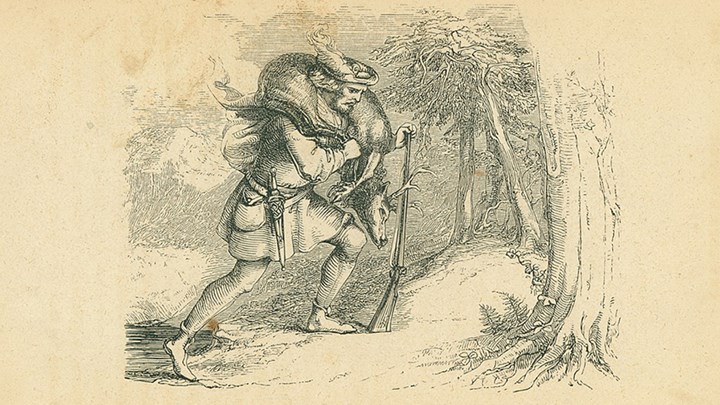
by Erin C. Healy - Sunday, March 17, 2019

Why is someone who has everything he needs to survive being lost in the woods—including skills and supplies—found dead while someone else—with no gear or training—is found alive? Sure, some of it is chance, but survivors, no matter their nationality, religion or economic strata, share similar character traits and patterns of decision-making that increase their chances of making it out alive. If you’ve read Laurence Gonzales’ “Deep Survival: Who Lives, Who Dies and Why” then you already know that you need to practice this way of living long before you get off course in a blinding snow storm, your business fails or you’re diagnosed with cancer. If you’ve followed up that book with “Surviving Survival: The Art and Science of Resilience” then you know even more about how the brain processes survival and how you can use hunting, for example, to help heal post-traumatic stress disorder.
In “Deep Survival” Gonzales spends the first half of the book sharing real-life outdoor stories of how people ended up in life-or-death situations. The riveting examples help illustrate the brain science that propels people into dire circumstance. The second half of the book explores who survived and who didn’t and why, and there are plenty of surprise endings. Below are the 12 ways of thinking that survivors tended to share. However, without reading the science behind how the most primal parts of the human brain respond to circumstance and how you can apply reason to counter them, you’ll be missing out on some training. So even if you don’t like to read, get the audiobook or at least watch the numerous YouTube videos of Gonzales being interviewed.
All of this is easy to read in the warm, dry comfort of your home. Besides, as hunters we usually take great care to ensure we are properly trained in firearm and hunting safety. We scout our grounds and we are well equipped with provisions and well-maintained gear. But one of the things Gonzales writes about is how we build these mental models of our lives and when the mental model is destroyed, whoever can adapt the soonest usually survives. For example, one of the stories Gonzales shares is about a U.S. Army Ranger who went whitewater rafting and ended up in the water. Moments later his guide was beside him reaching out to rescue him. All he had to do was grab ahold. Only he didn’t. In his mind, in his mental model of life, he was a Ranger. To have to be rescued was to fail. He had survival training, he was fit, he was smart, he knew what he was capable of—in other words, he could take care of himself. He refused the help. He said he’d be alright. He was pinned against a rock and drowned. It’s that very mentality that can cause a hunter to trek blindly when he’s lost, refusing to stop and reorient because he “knows” his hunting grounds and if he just keeps going… That is your mind in panic.
In “Surviving Survival” Gonzales covers how those who have survived a life-threatening or mental-model-exploding ordeal manage in everyday life. In one example, a woman loses her 5-year-old daughter. She is, of course, devastated. After years of being completely unable to function, she discovers that knitting calms her. Gonzales reveals the brain science behind the hand-mind connection; it is much stronger than we think. For five years, this mother was constantly holding, feeding, bathing and clothing her daughter. In her grief she would wake up and complain that her arms—the arms that hugged her girl, the hands that did her hair—were literally physically aching, like phantom limb pains. Her healing began when she found an outlet for her hands.
Gonzales used the example of how a cat will scream, scratch, kick and bite if you step on its tail, but it cannot do that when it’s stalking a mouse. The brain will not allow the fight-or-flight mechanism to happen at the same time that we’re seeking. (It cracked me up to hear Gonzales say, “People don’t stalk much.” He obviously doesn’t know hunters.) But when you apply these two stories together, you get a recipe for healing PTSD. When a soldier is at war his hands are constantly involved with maintaining and using his gear. When he returns to civilian life, he is stripped not only of his job, but of the hands-on ritual that went with it. His arms can literally ache for his rifle. Plus, emotionally he could be continually like the cat that had its tailed stepped on: reactive. But he can’t be reactive when he’s seeking, stalking, which is why hunting is such a therapeutic way to help service members begin their healing.
If you’re lucky it might even happen naturally. U.S. Marine and Korean War Veteran Max Sarazin said he was amazed when he watched the Sitka video on how hunting helped a soldier with PTSD. “Oh, my God, I never realized. Did a lot of hunting after Korean War: pheasant, rabbit, deer and especially duck with my dad or uncle.” His elders didn’t know the science behind their hunting trips nor did Max know why it made him feel better. Thanks to Gonzales bringing much of the latest brain science to light in a compelling consumable way, today we know exactly why and how hunting can help heal.
About the Author: Erin C. Healy is the associate editor of the NRA Hunters' Leadership Forum. She edited a lifestyle magazine on Cape Cod for 14 years and provided marketing services for her local guntry club prior to joining BLADE magazine. She served in the U.S. Army, is an NRA Life Member, a National Wild Turkey Federation member and sends her Jack Russell Terriers to ground as often as possible.
Follow NRA Hunters' Leadership Forum on Twitter at @HuntersLead.
E-mail your comments/questions about this site to:
[email protected]
